July 8th, 2011
Lost Art. Amazing Accent.
In the last post, I shared a beautiful example of a building facade with a sgraffito pattern. If you are familiar with the dimensional or “embossed” stencil method, it appears as if a giant stencil was placed over the side of the building and a layer of thick plaster was troweled through to create a raised image. Sgraffito is actually a process where a wet layer of plaster is placed over a contrasting color of plaster, the design is transferred, and the plaster is carved (or scratched) back to reveal the first layer in the shape of the design. You will find examples of the sgraffito method of decoration used extensively in Italy and other European cities, as well as Morocco. I have posted Italian examples of sgraffito here before, and many beautiful examples from Marrakech as well. I have even tried to reproduce the look of Sgraffito with our Modello patterns.
In Barcelona it was used quite a bit in the older Gothic Quarter.
Alas, this labor intensive means of decoration has become something of a lost art.
The common use of sgraffito may have had its last swan song at the beginning of the 20th century in the Eixample district of Barcelona, as they were constructing the beautifully detailed buildings that grace this area.
According to our guide on a recent tour there, at that time time labor was cheap and highly skilled craftsman were plentiful, so sgraffito was a “cheap” alternative to more expensive stone facades.
We can be thankful for this today, as the Modernisme movement of Catalunya has left us this gift in the city of Barcelona.
Some of the most stunning examples of Sgraffito can be found at Casa Amatllar, on the “Block of Discord”, right next to Gaudi’s Casa Batlló. This beautiful space, built by architect Puig i Cadafalch has just recently been opened to the public for tours. The photos above show just the open entrance area that anyone can walk into from the street. I unfortunately MISSED the opening time for the tour, but two of the ladies on our group were lucky enough to join a guided tour of the building and IT IS AMAZING with all the walls and ceilings FULL of decorative sgraffito (they sneaked some pics!). They will be closing it down again in a couple of months for a full renovation, but I can guarantee that this is the first place I will try to visit when I return to Barcelona!
Last image via flickr
July 6th, 2011
Looking Up in Barcelona
On my recent trip to Barcelona, I got up early one day (well, OK, 8am-which IS early when you’ve just flown intercontinental from the West Coast!) to take a nice, leisurely walk around our hotel neighborhood.
We were staying in my favorite area, the Eixample district (roughly promounced EYE-SHAM-PLA)
This well-planned area of Barcelona was constructed in the late 19th-early 20th centuries after they tore down the Roman wall surrounding the old Gothic Quarter of the city to expand westward and connect it to the outlying small towns of Gracia, Sants, and others.
Designed in a strict grid pattern by Ildefons Cerda, the blocks are actually octagonal in shape. The chamfered corners were designed to bring in more sunlight and ventilation. You REALLY notice these as you are walking, because each time you reach a “corner” you have to walk a bit more to get to the place you can actually cross the street.
The Eixample district includes some of the finest examples of Modernista architecture in Barcelona, including the major works of Antoni Gaudi, such as Sagrada Familia, Casa Mila, and Casa Batlló (shown above).
But beyond that, it’s one of the most pleasant city neighborhoods you will find. This is high density living at its finest. I particularly love the rows and stacks of divinely decorative balconies….
…and the special touches and attention to detail on the facades….
…including my favorite design detail, sgraffito. You will see amazing examples of this decorative plaster technique on almost every block. This one above is one of my favorites, but I have more sgraffito to share with you when we continue our walk-in the next post!
September 23rd, 2010
Ancient+Modernista
I love going to Europe! My favorite European city so far HAS to be Barcelona, the capital city of Catalonia, Spain. Barcelona has it ALL you see: the sea, the mountains, cava (champagne!), tapas, shopping and people watching along La Rambla, the Bari Gotic (old Gothic Quarter). It was not exactly PAINFUL to get “stuck” there for 5 additional days at the end of our honeymoon last April!
Our wonderful local friend, Paul Deprez picked us up from the apartment we needed to vacate in the moody, Medeival, Bari Gotic area and got us settled in to a lovely modern hotel in the Eixample (phonetically eye-sham-pla) district.
Developed mainly in the first part of the 20th century, the Eixample district is famous for its unique Modernista architecture and the amazing buildings of Antoni Gaudi, such as Casa Batlló shown above. While I truly love the old, historic streets and buildings of the Bari Gotic, the Eixample district for me is an inspiring source of jaw-dropping visual delights. In fact, there are so many fine examples of fine craftsmanship and insanely beautiful decorative details that could be easy for many to completely miss them because THEY ARE EVERYWHERE!
Of course, some of the most striking architectural details, for me, are in the abundant sgraffito walls and facades.
Sgraffito is a process of scraping and scratching through a top layer of colored plaster to reveal a different color layer below.
I have written before about the sgraffito in Florence, Italy, but in Barcelona the look is uniquely light and colorful.
In addition to the amazing sgraffito, there is ornate plasterwork, exquisitely detailed metalwork, and unusual stained glass.
I will be traveling BACK to Barcelona for a few days next week, on my way to our painting trip in Umbria, Italy, to visit with Paul and finalize the details on ANOTHER painting adventure-to Barcelona in June 2011!! This trip will feature the best of many worlds, as it will include a 5-day stay in a serene, historically significant monestary in the rolling hills just outside of Barcelona where we will conduct a class and complete a painting project on site. After the project is complete,we will move to apartments in the city for a week to experience this amazing city up close, in between side trips to taste cava and explore the surrounding area.
More details to follow, but please let me know if you are interested in travelling to Barcelona with me, because the group will be limited to just 8….
Pssst! There are some fantastic flickr sets of photos of Barcelona and the Eixample district if you want to see more!
March 23rd, 2008
Marrakech Express
All aboard/that pla-aa-aane! Wow! I had such a hard time figuring out where to begin to share all the exciting sights and happenings on my trip to Barcelona/Marrakech/Madrid that a whole week has already gone by since my return. I’ll start with Marrakech first:
It’s just hard not to be made speechless by the quantity and quality of the decoration there. Everywhere there! Even the most humble restaurants and buildings are a visual smorgasbord of color and pattern. The colorful fabrics, the lacy metalwork, the painted pottery, berber carpets, intricate carved plaster, inlaid wood, embroidered leather, zelij tiles, bebouches (leather slipper/shoes), the tadelakt walls that are everywhere with sgraffito borders ”scratched” into them: Everywhere you look is a feast for the eyes! Here’s just a sampling-
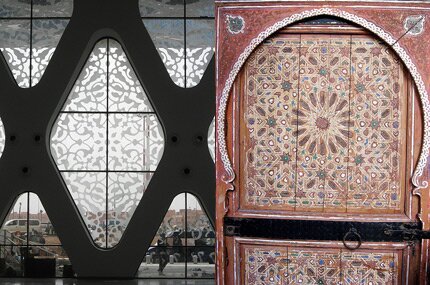
Left are the 2 story high windows at the Marrakech airport that is undergoing renovations. I looked at these closely, of course, and believe that the vinyl was all cut by hand! At right is an antique painted wood door that was in our courtyard at Riyad el Cadi.
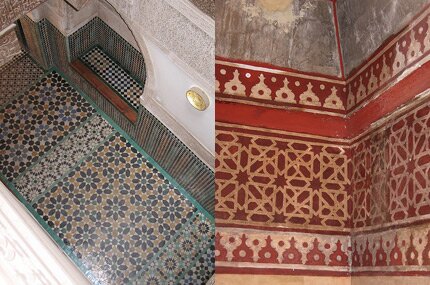
Zelij tile floor at Ali ben Youssef Medersa and, right, a wall in a hammam.
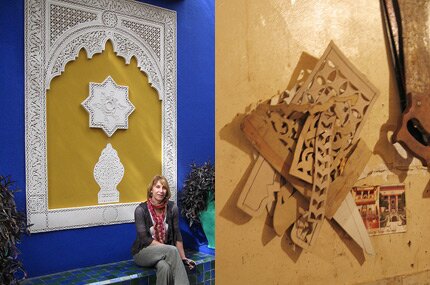
A trip to Jardin Majorelle is required I think, if just to experience the most pure blue and yellow colors you will ever see. At right, stencil templates are used to transfer patterns for carving wood and plaster.

Tadelakt and a Sgraffito border at a restaurant off the amazing Jemaa el-fna and, right, the berber carpet that is hopefully winging its way to my dining room as I write!
My son Dan and I had a wonderful time meeting the most lovely Maryam, both in town and at Peacock Pavilions. She is all that you would expect, and then some more! One of my favorite memories is her and her friend bargaining (in perfect French, of course) with a vendor for about 10 minutes to get me a good price on my new fake Ray Bans. She’s tough, this girl! Our creative journey together continues!! Maryam and Chris’ style is very chic and sophisticated and their goal is to incorporate traditional Moroccan designs and motifs in a very modern, unexpected way into their interior spaces. And so we shall……more to come, of course. I am chomping at the bit to get back there with our painting group in May! Morocco is definitely NOT the kind of place to visit just once.
There are more of my trip photos here and here also is another great flickr set on Marrakech by someone who is actually a very GOOD photographer, rather than the accidental one that I seem to be!
September 7th, 2007
In Love with Lime
Wow! I have been SO busy in the studio. I have so much to share and so little time! I was just reworking some of the samples for our Italy trip and feeling very happy with the results so I want to share! One of the finishes we will do is meant to replicate some of the gorgeousl woven silk fabrics found at Antico Setificio Fiorentino.
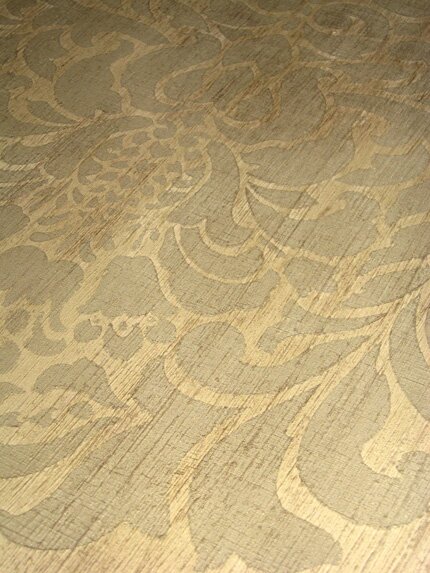
This one is done with Oikos’ Kreos material, which is much like a really thick, somewhat gritty paint. It’s fabulous for creating highly textured looks. For this I troweled on the lighter color and then stria’d it with their Corduroy tool (which resembles really cheap Astroturf). It works better than anything I’ve tried before for creating a slightly irregular stria with lots of nice “nubs”. Once dry I used a stencil and was actually able to roll on the darker color through the stencil and stria through it with a brush without pushing the product under the stencil-even over a textured surface. You really can’t see it well in the photo, but the finishing touch is using two different colors of mica-tinted Bee’s Wax (from Kathy Carroll) and manipulating them a bit.
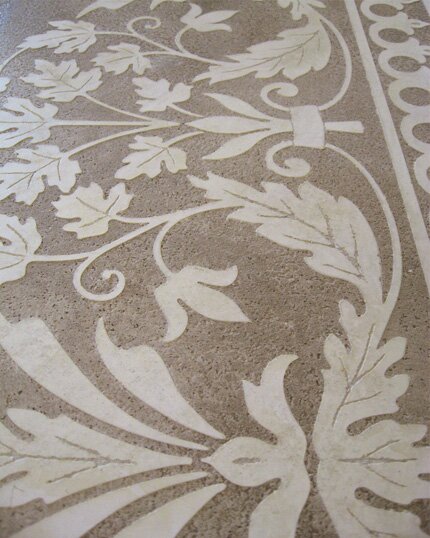
I wanted to rework the Sgraffito finish done earlier for another room and found that the combination of using a 10mil Modello for the main pattern and just a bit of “scratching” with a sharp tool for the vein details makes it look like I was scratching and carving all day-not! I LOVE the Oikos Travertino texture on the background on this one.
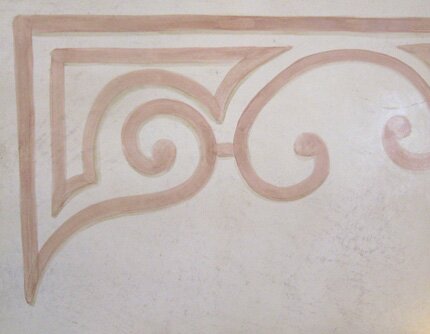
Most of the finishes we will be doing in Alison’s studio need to be kept fairly simple and neutral, as they will serve as backdrops for her own beautiful handpainted and gilded furniture pieces. This Oikos Lime Wash (actually it’s called Pittura Calce Verona) with some handpainted accents will hopefully fill that bill. All of these products can be ordered through Kathy’s site here.
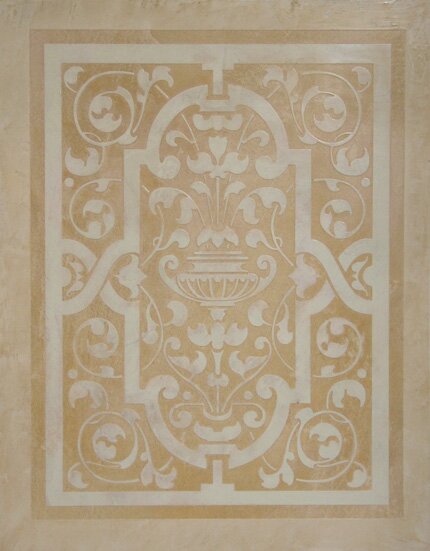
This one uses Safra lime plasters from the School of Italian Plasters and is a sample to test the technique for some cartouche designs what will go around a door and as a frame for artwork. It is a Marmorino base with Calcenova Arredo through the Modello. I have not done much personally with lime plasters in the past, but after the last week, I think I am hooked! Now, to tackle some real walls…..
August 15th, 2007
Sample Sampler
When I wrote earlier on this blog about the amazing examples of Sgraffito that can be seen on facades around Florence I was amazed at the level of detail and craftsmanship. After attempting this technique at Kathy Carroll’s place in Chicago for a sample for our Italy project at Alison’s Florence studio I am completely humbled and ever more awestruck!
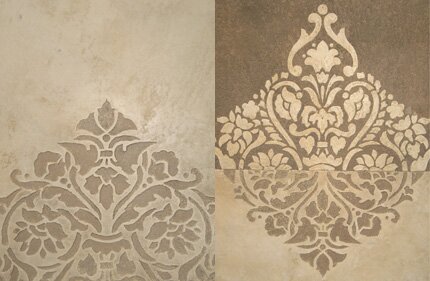
I kid you not, it took over an hour to scratch out the small amount of design you see on each of these boards. Each! The lime plasters were applied over a Travertino basecoat. While still wet, we stenciled the design lightly to provide the pattern and then removed it in those areas to reveal the basecoat using a sharp pick and clay carving tools. I DO like the effect of the one on the right where we did the Sgraffito technique on the lower half and used the stencil to emboss the plaster on the upper part. I am certain we will take the easy way out on this and to a “faux” sgraffito finish using a Modello masking pattern for the positive/negative effect!
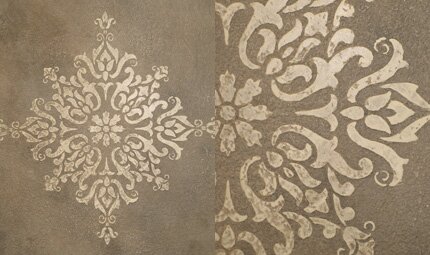
This one is just stenciled. A pretty look as well!
May 7th, 2007
Scratching the Surface
Sgraffito is a decorative technique that involves layering contrasting colors of lime plaster. While still wet, the design is scratched into the top layer of the lighter colored plaster and then the negative spaces of the design are removed to reveal the darker layer underneath. You can imagine the time and skill involved in managing this type of artform, particularly as it was accomplished across the entire facade of a building. There are still buildings in Florence that bear this beautiful and intricate artform, dating as far back as the 15th century. It was at that time that many fanciful frescoed examples from ancient Rome were found, now buried in underground cavelike rooms (‘grottoes’) after thousands of years of development. The discovery of these stuccowork motifs of flora, fauna and monstrous figures inspired many decorative artists at the time, who began incorporating these motifs into their work on a large scale and referred to them as ‘grotesques”.
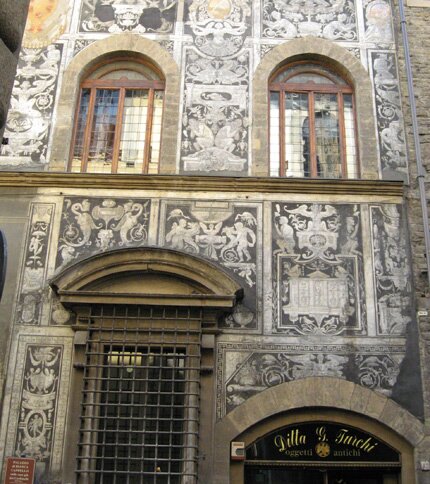
The 16th century artist who is credited with the invention of the grotesque compositions in black and white sgraffito is Andrea di Cosimo Feltrini, who directed a flourishing workshop that specialized in the decoration of furniture, textiles, coats of arms, interiors and was particularly renowned for its scraffito facade grotesques. I snapped the photo above on a street in Oltrarno, but there is a lovely book available on the subject, The Painted Facades of Florence, that is filled with the history and motifs of this classic Florentine artform.
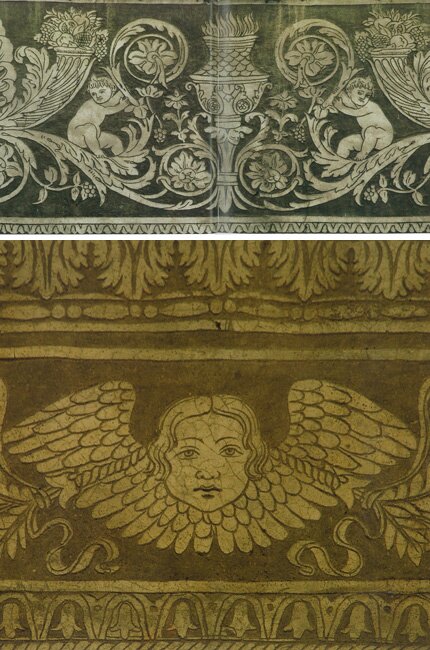
I particularly enjoy the photo shown just above as you can clearly see where the artist either forgot or ran out of time or daylight to carve out the final small details of the egg and dart molding. We will be attempting to create a faux sgraffito finish in the bathrooms at Alison’s studio. By that I mean that we will create the look not by using a removal technique, but rather applying the plaster in layers using stencils and Modellos. The silvery-black and white coloration should look really handsome with the blue tile already on the walls!
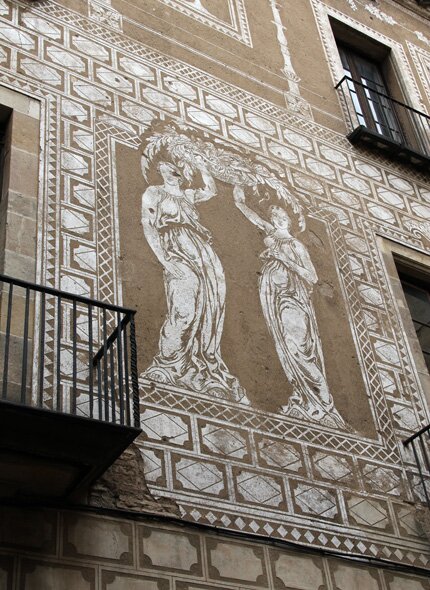


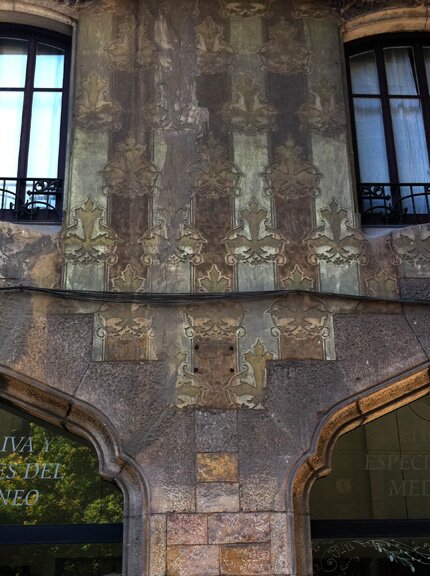
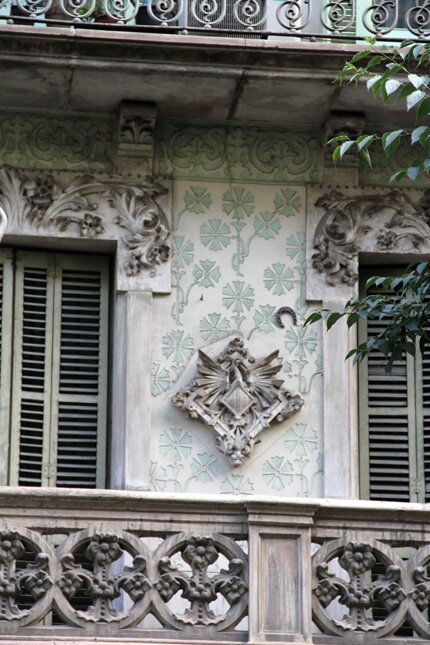
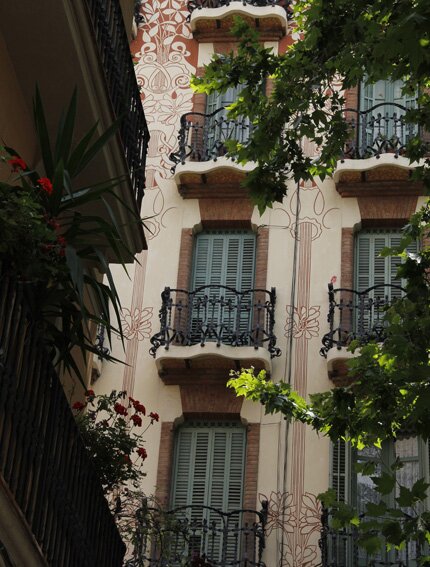

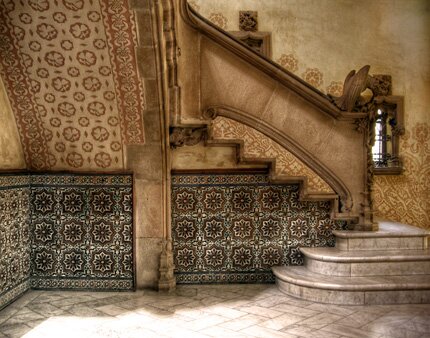

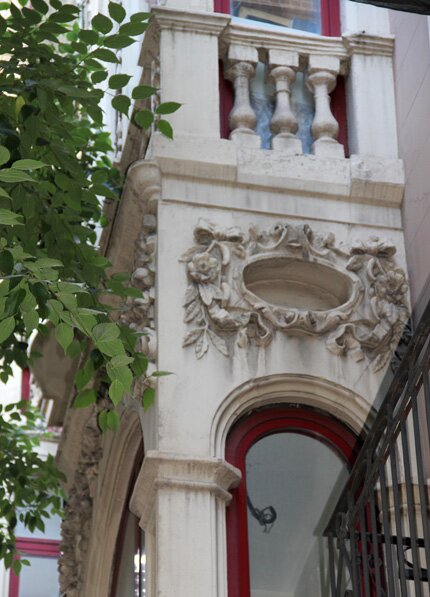
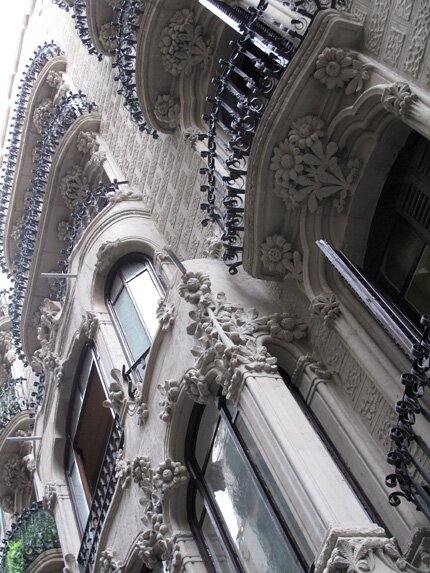
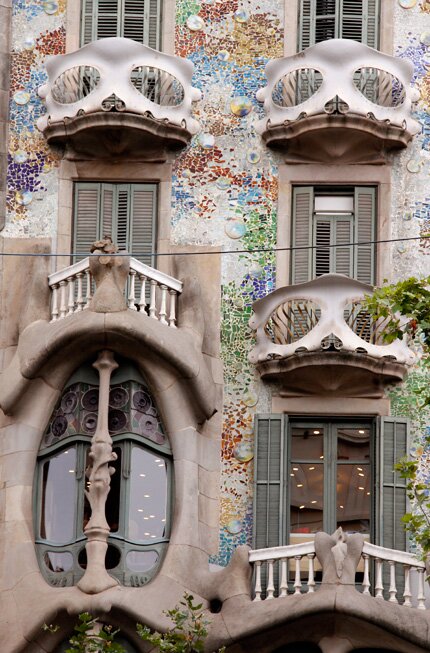

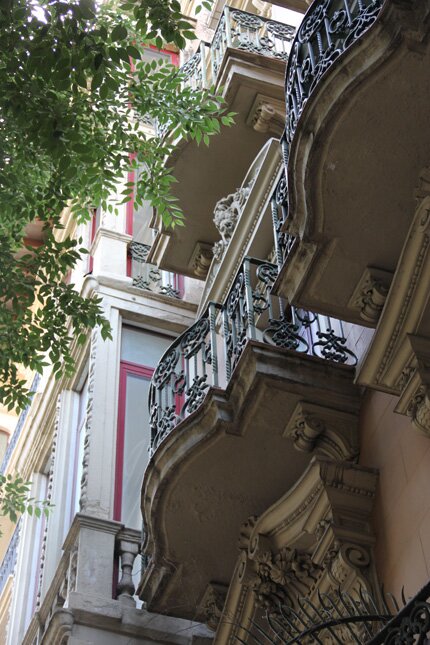
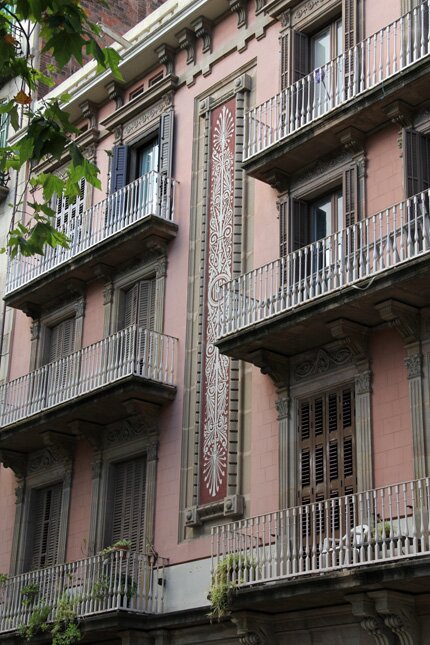
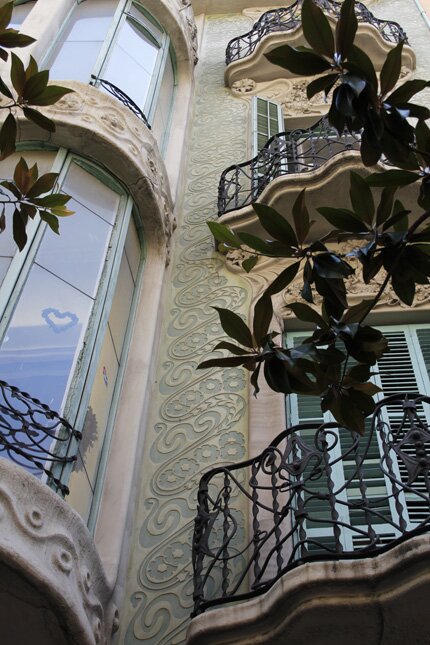
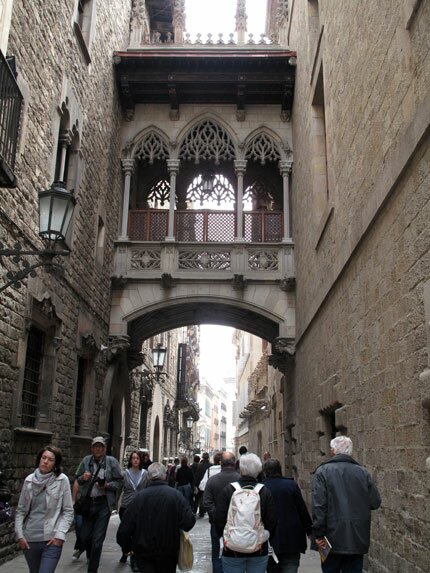
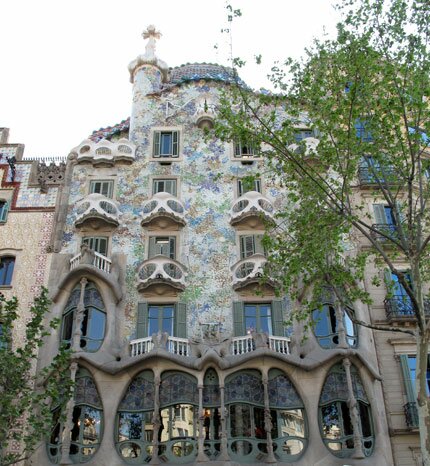
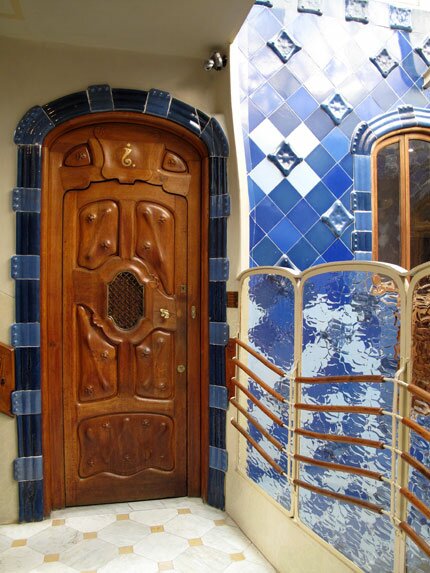
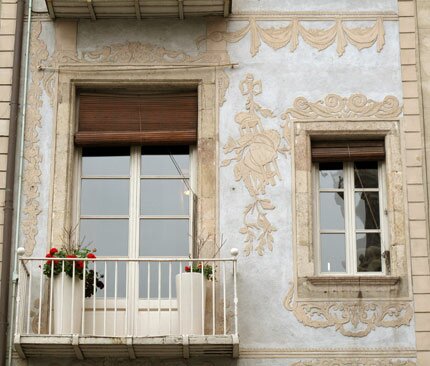

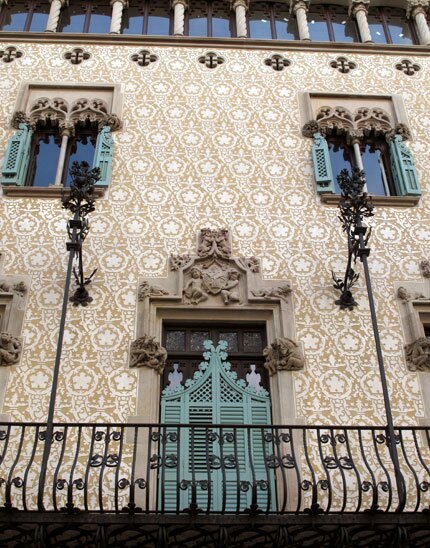
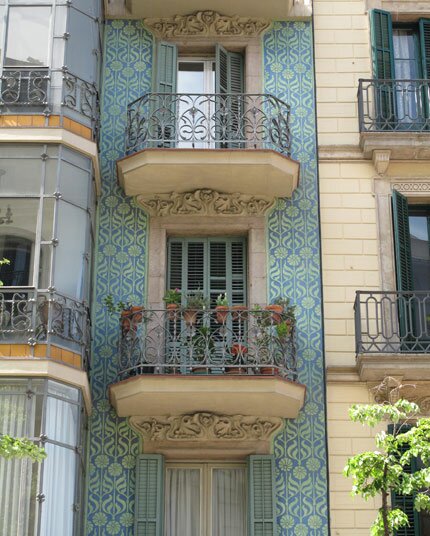
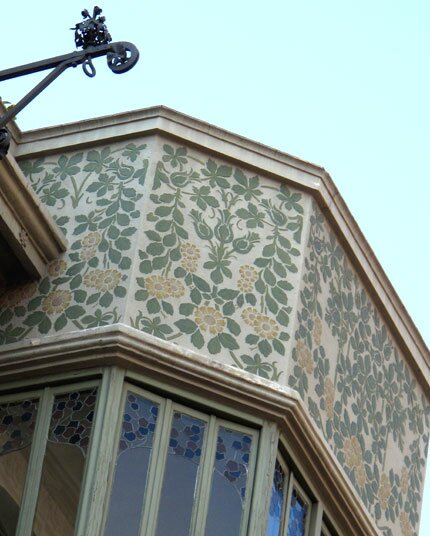
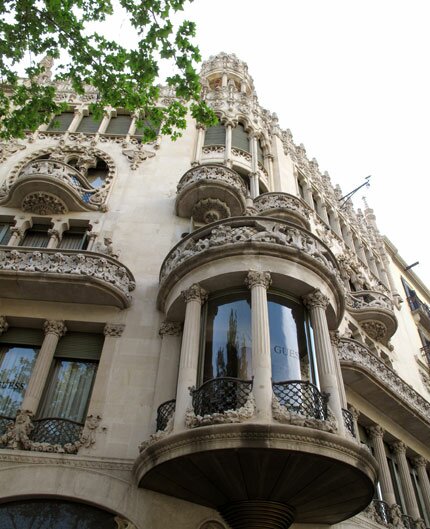












 Copyright © Designamour
Copyright © Designamour